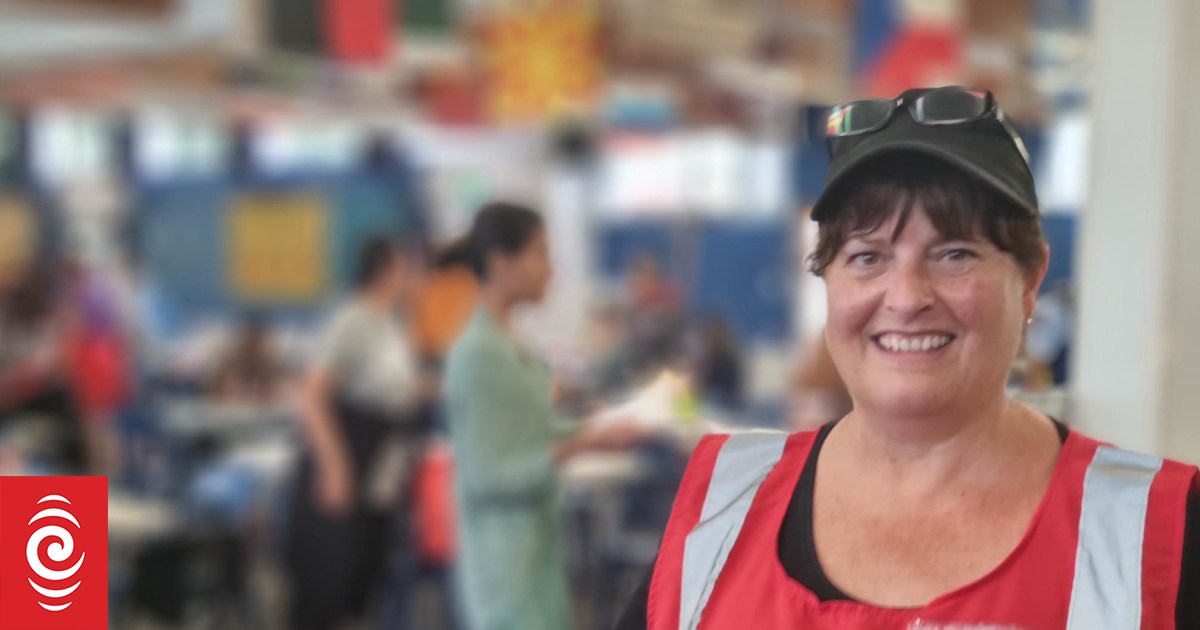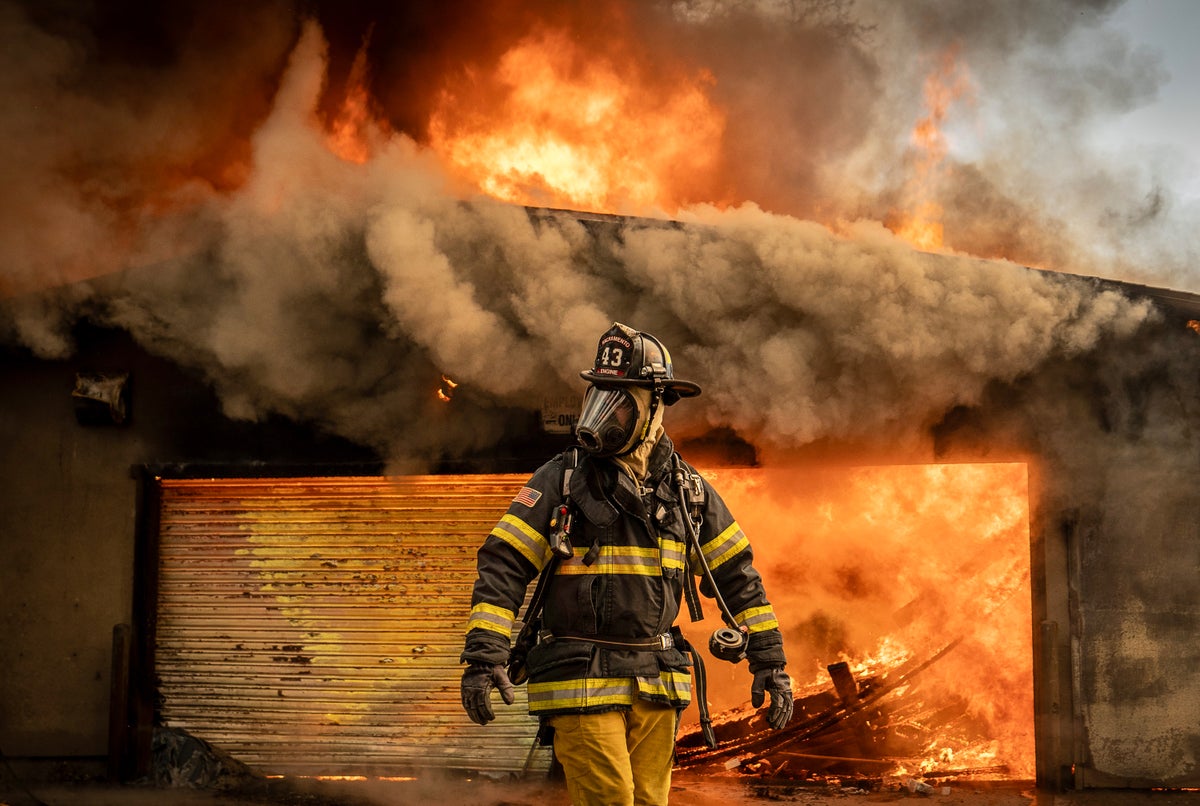Radioactive capsule wasn’t discovered missing until more than two weeks after it left Rio Tinto mine site
Back with Darryl Ray, the acting superintendent of the Department of Fire and Emergency Services. He says it was two weeks before anyone realised the capsule was missing.
He says the capsule and container were packed on a pallet on the mine site on 10 January. It arrived in Perth on the 16th and was transferred to a radiation service company. It sat there until 25 January when it was opened.
It was not until the 25th, late morning, when they opened it up to reveal that the device had fallen apart, was damaged in transit, and that the actual capsule was discovered missing, which is when authorities were first notified.
Key events
Filters BETA
What happened today, Saturday 28 January
We’re going to wrap things up for the day. These were the main events:
-
Western Australian authorities are continuing to search for a radioactive capsule lost somewhere on 1400km of road for as long as two weeks
-
Mining company Rio Tinto confirmed the capsule was being transported from one of its mines
-
Libby Mettam said she will challenge David Honey for leadership of WA’s Liberal Party
-
A man has drowned at Shelly Beach in Cronulla in Sydney and two others were taken to hospital after being rescued from the water
-
A man died and another was taken to hospital after falling from a cliff in Victoria’s Mornington Peninsula
Thanks for joining us and we’ll see you again tomorrow.
Man drowns at Sydney beach and two others taken to hospital
A man has drowned and two others have been taken to hospital after being rescued from the water at a Sydney beach, AAP reports.
The three men were swimming with friends at Shelly Beach in Cronulla when they got into difficulty in the sea.
Two were pulled from the water unconscious and were treated at the scene.
One of the men, who is yet to be identified, died at the scene while the other was taken to hospital.
A third man was also taken to hospital.
Police are investigating and will prepare a report for the coroner.
The fatality is the latest in a horror summer on Australia’s beaches as authorities warn people to swim between the flags and avoid mixing alcohol and swimming.
Three hundred people were rescued from the water in NSW on Australia Day alone.
Royal Life Saving Australia estimates there have been more than 50 drownings across the country this summer.
‘Protected’ vintage Holden cars face export ban
A series of vintage Holdens up for auction face an export ban if they are given “protected” cultural status, AAP reports.
Lloyds Auctions says it plans to put the vehicles under the hammer on Sunday as part of a larger classic cars sale.
But the federal government says some of the Holdens – valued in the millions – could be classified as Australian protected objects.
The protected status bars objects of significant importance to Australia from being exported.
Other objects that enjoy the same status include sacred Indigenous artefacts, pieces of Ned Kelly’s armour and Victoria Cross honours awarded to war veterans.
Lloyds’ chief operations officer, Lee Hames, says the collection of vintage cars, which includes the Holdens, is worth tens of millions of dollars.
“We have notified all foreign bidders and interested parties that they face possible challenges in exporting some of these special classics,” he says.

WA officials believe radioactive capsule is on the road somewhere along truck’s 1,400km route
Dr Andrew Robertson says the most likely scenario is the capsule is on the road somewhere along the 1,400km route the truck travelled.
I think we are very confident that if it is somewhere along that route, we will find it. But, you know, there are a number of variables here, it could have been knocked further out into the bush, it could have been picked up and carried in a tyre wheel in another direction. We have to look at all of those options.
He says:
It is a very tiny object, and it is most likely somewhere along that 1,400km of road. The risk of somebody finding it is actually very low. But we still felt it was important that people did not, you know, inadvertently pick it up.
Radioactive capsule wasn’t discovered missing until more than two weeks after it left Rio Tinto mine site
Back with Darryl Ray, the acting superintendent of the Department of Fire and Emergency Services. He says it was two weeks before anyone realised the capsule was missing.
He says the capsule and container were packed on a pallet on the mine site on 10 January. It arrived in Perth on the 16th and was transferred to a radiation service company. It sat there until 25 January when it was opened.
It was not until the 25th, late morning, when they opened it up to reveal that the device had fallen apart, was damaged in transit, and that the actual capsule was discovered missing, which is when authorities were first notified.

Authorities don’t know when capsule fell off back of truck
Robertson says authorities do not know which date the capsule fell off the back of the truck it was being carried on.
Authorities believe vibrations during the journey caused screws in the container the capsule was being carried in to come loose.
We’re not confident what day. The other issue is, even if it has fallen off late in the trip, you know, it may have been picked up by other traffic or it could have gone in other directions.
Public should not handle the capsule if found: WA chief health officer
Western Australia’s chief health officer, Dr Andrew Robertson, says many surveys have been conducted over the past two days to try to find the capsule.
He says if a member of the public was to find it “we are very keen that they do not handle it”.
The source is most dangerous if it is handled or if it is close to the body. If you are further than five metres away from the source, certainly if you are more than 20 metres away from the source, it will pose no danger to you.
If it is closer than that, and we strongly discourage people from picking it up, certainly don’t put it in your pocket or put it in your car, don’t put it on your sideboard, it will continue to radiate.
He says if anyone finds the capsule they should move away from it and contact 13DFES and report it.
Missing radioactive capsule still not found, authorities using GPS data to try and locate it
In Perth, the department of Fire and Emergency Services is giving an update on the missing radioactive capsule.
Acting superintendent Darryl Ray says it still has not been found.
He says authorities have continued “research on strategic sites along the route that the vehicle taken, concentrating on sites close to high population areas within the metropolitan suburbs.”
We are not trying to find a tiny little device by eyesight. We are using the radiation detectors to locate the gamma rays, using the metres, that will help us then locate the small device. We have secured the GPS data from the trucking company to determine the exact route and stops that the vehicle has taken on its journey.
NSW Labor pledges domestic violence support centre in Sydney’s south-west
NSW Labor has pledged it will build a domestic violence support centre in Sydney’s south-west for migrant and refugee women if it defeats Dominic Perrottet’s government in March.
The opposition leader, Chris Minns, said it was difficult starting a new life in Australia as a migrant or refugee, but even more difficult for domestic violence victims.
“People who are facing domestic and family violence should never be left behind,” he said.

The Settlement Services International centre echoed similar support for migrant and refugee victim-survivors in Victoria and Queensland.
One in three migrant and refugee women experience domestic violence and there has been a 5.7% jump in domestic violence-related assaults in south-west Sydney, which is home to a large multicultural community.
The opposition women’s spokeswoman, Jodie Harrison, said the proposal would bring NSW in line with best practice.
“Migrant and refugee women experiencing domestic and family violence face specific challenges relating to visa status, a lack of trusted social networks as well as language and cultural barriers to reporting,” she said.
Average Help debt forecast to increase by at least $1,700 when indexed
Millions of Australians with Higher Education Loan Program (Help) loans could face thousands of dollars in extra debt this year as soaring inflation hits the education sector.
Independent modelling provided to Guardian Australia suggests Australians with an average Help debt of $24,770.75 will face an increase of at least $1,700 when it is next indexed on 1 June, assuming, as is likely, that living costs remain high.
Help – previously the Higher Education Contribution Scheme (Hecs) – is tied to inflation, increasing proportionately in line with the consumer price index (CPI). Inflation is currently growing at 7.8% – the fastest pace since just before the 1990s recession.
Indexation of debts occurs annually on 1 June. With inflation at its current rate, they’re forecast to be indexed by at least 7%.
Read more of Caitlin Cassidy’s piece here:
Controversial US prisons operator wins $420m Australian government contract for Nauru
The controversial US private prisons operator running Australia’s offshore processing regime on Nauru has been handed a $420m Australian government contract to run “garrison and welfare” on the island for three years, managing fewer than 70 people.
The Australian arm of Management and Training Corporation (MTC) was awarded the contract despite a string of scandals in the US, my colleagues Ben Doherty and Christopher Knaus report.
Read their exclusive here:



















Discussion about this post